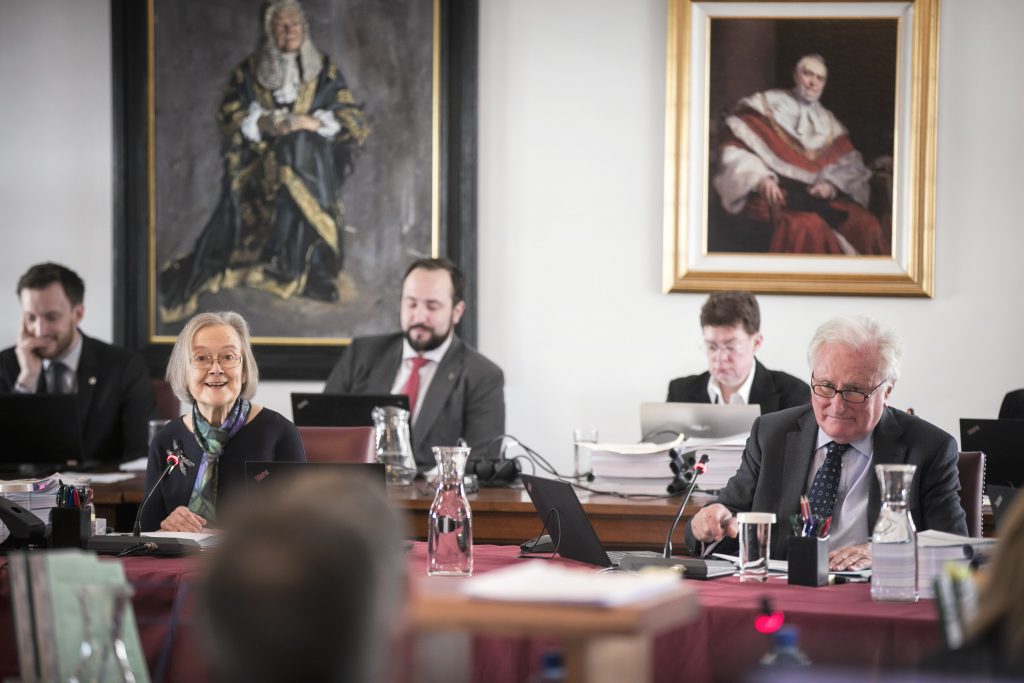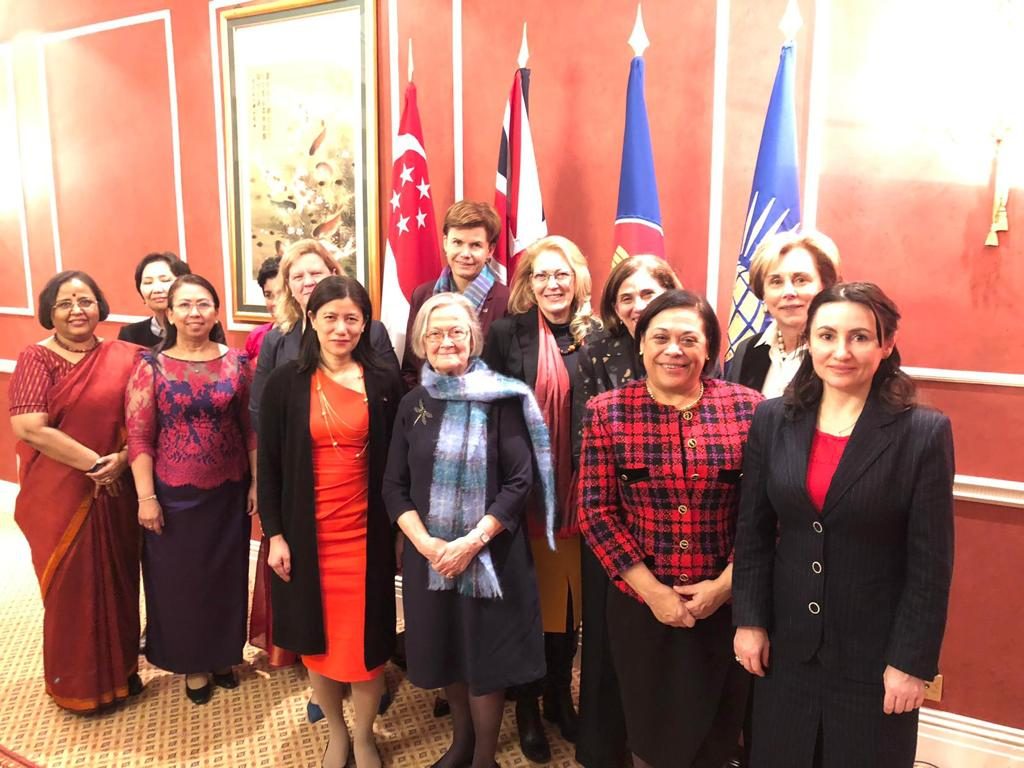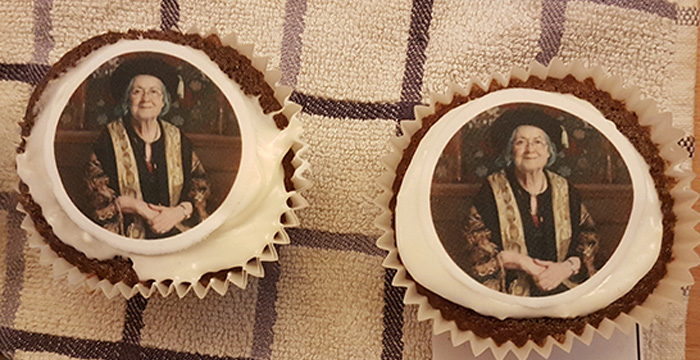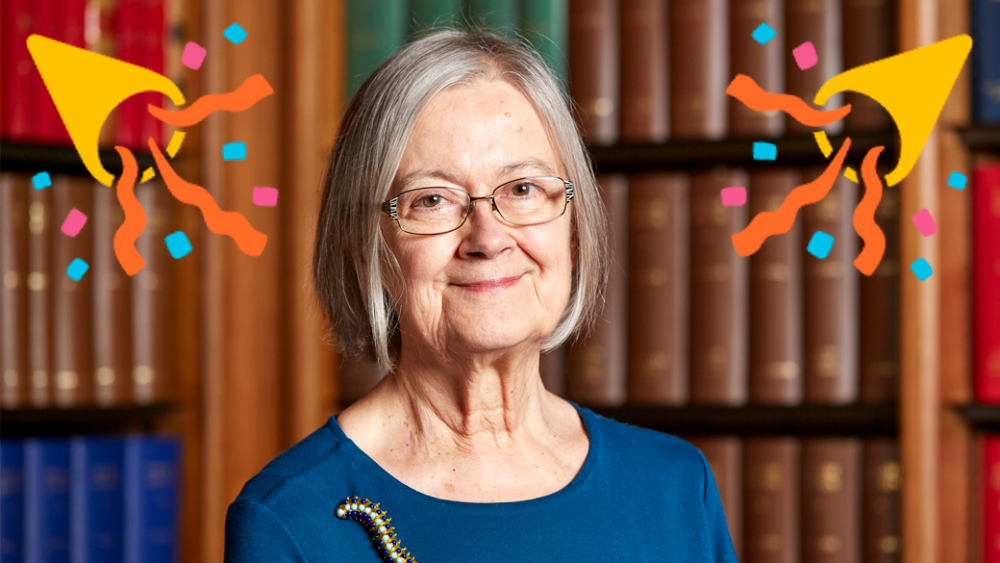Sixteen months into her trailblazing stint as the first woman President of the United Kingdom’s Supreme Court, Baroness Hale of Richmond continues to revolutionise the face of the legal profession – this time through bagging a double-page spread in the February edition of Vogue UK.
Yorkshire-born Brenda Marjorie Hale, also known as Baroness Hale of Richmond, or simply Lady Hale, is known in and outside of legal circles for being both a top legal brain and an iconoclast of the legal profession. Here we look at six reasons why she rocks!
-
She Has Smashed the Glass Ceiling Again and Again
To put it mildly, Lady Hale has had a lot of firsts. Aside from making history as the first female Supreme Court Judge in 2004, the Court’s first female Deputy President in 2013, and the first female President of the Supreme Court in 2017, Lady Hale was also the first woman to be appointed to the Law Commission in 1984 (a government body promoting reform of the law) and the first High Court judge to have previously served primarily as an academic and public servant rather than a full-time practising lawyer.
-
She has Pioneered Groundbreaking Legislation
Working as a Law Commissioner in the 1980s and early-1990s, Lady Hale pioneered law reform on matters as diverse as children’s welfare, decision-making for mentally incapacitated patients, and divorce law. Her team’s work led to the creation of groundbreaking legislation including the Children Act 1989, the Family Law Act 1996, and the Mental Capacity Act 2005. These laws addressed complex legal issues of the day, and the Mental Capacity Act 2005 in particular, tackled the thorny problem of consent to medical treatment when a patient is incapacitated.
-
She is an Unabashed Feminist

Newly appointed to the UK’s highest court in 2004, Lady Hale created a coat of arms bearing the motto ‘Omnia Feminae Aequissimae’, meaning “women are equal to everything”. True to her motto, in an interview with The Guardian to celebrate 100 years since the Act of Parliament enabling British women to join professions (including law), Lady Hale advocated for greater gender representation on the Supreme Court. While she acknowledged that achieving 25% of female judges on the Supreme Court (with the addition of Lady Black and Lady Arden in 2017 and 2018) was “an important breakthrough”, Hale stated that “an ideal balance would be at least 60/40 either way”.
-
She has Championed All Types of Diversity in the Legal Profession

Lady Hale at an event at the High Commission of Singapore in London January 2019 Credit: High Commission of Singapore, London
In addition to being a self-proclaimed feminist, Lady Hale also champions ethnic diversity in the law, “where there is still a great deal of work to do”, and “diversity in social, economic and professional background”. Speaking to The Guardian Students in February 2018, Lady Hale said: “The law, the legal profession and the courts are there to serve the whole population, not just a small section of it. They should be as reflective of that population as it is possible to be.”
-
She Appeared on MasterChef
 Credit: Oxford Human Rights Hub/ Legal Cheek
Credit: Oxford Human Rights Hub/ Legal Cheek
Apparently generous with her judging skills, Lady Hale recently appeared on a special episode of MasterChef to mark the 100-year anniversary of granting certain women the right to vote in the UK. Alongside other illustrious female professionals and women’s rights campaigners, Lady Hale sampled three fish dishes. TV editing means we unfortunately do not know the outcome of her judgement in this particular instance, but Legal Cheek reports that Lady Hale was clapping at the end of the challenge and she conceded that it is “really hard to cook fish for large numbers of people.”
-
She Has Changed the Face of the Legal Profession
Lady Hale has repeatedly called into question some of the legal profession’s dubious traditions. For example, Lady Hale used to stay at judicial lodgings while on the circuit outside London. It was a tradition in these lodgings for female judges to retire to a separate room after dinner, leaving the male judges alone to converse and drink port. One time, feeling it would be unfair for a more junior female barrister to be excluded, Lady Hale told the male judges that she and her colleague were not leaving.
She has broken with legal tradition in other ways too – from smiling in her portrait for the Inn of Court to objecting to having to wear ‘silly wigs’.
She has broken with legal tradition in other ways too – from smiling in her portrait for the Inn of Court to objecting to having to wear ‘silly wigs’ as a barrister in court. While these challenges to the status quo might seem small, they help redefine the legal system as the domain of more than just a select few.
There really are too many reasons Lady Hale rocks to include here, but suffice to say that the ‘Beyoncé of the legal profession’ is living up to her reputation. Here’s hoping that in her remaining time as President of the Supreme Court, Lady Hale keeps trailblazing and paving the path towards greater diversity in the legal profession and making it more accessible for all.







